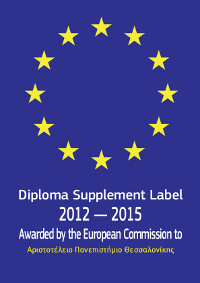By founding the Biblical Museum of the Faculty of Theology, an old wish of Professor Emeritus Damianos Doikos was fulfilled.
After years-long efforts, in September 1986, the Senate of the Aristotle University of Thessaloniki approved the relevant programme. It wasn’t long before the Biblical Museum began correspondence with museums in Europe, while dealing with bureaucracy and trying to overcome obstacles. The first exhibits from the Louvre Museum became part of the museum two years later (in 1988). A few years later, new exhibits were added in the museum, namely from the Archaeological Museum of Thessaloniki and also from the British Museum (in 1990). Although there is shortage of exhibits, the Biblical Museum is a credit to the Faculty of Theology and to the Aristotle University of Thessaloniki in general.
Today, visitors to the museum, which is located on the 3rd floor of the building of the Faculty of Theology, discover in amazement that most exhibits are not directly related to the Bible. This happens due to the fact that the main objective of the museum is not to support the biblical truth; that is, its goal is not apologetic. Rather, it aims to provide a complete picture of the broader historical, geographical and cultural environment of the Near East, that is, where the Bible was created.
From mid-19th century onwards, various important archaeological excavation projects shed light on the civilizations that prospered in the area in question, and were forgotten. Hence, the Bible is no longer considered the oldest book in human history, but a vital source of broader cultural trends of the peoples living in the East. Taking into consideration the fact that the languages of the area are largely unknown today and that long-lasting studies and specialized knowledge are needed in order to decipher the texts, pictorial representations were chosen which provide visitors with the opportunity to get a sense of the form of the objects described in the texts and, most importantly, view the world the way people of that era did and, thus, understand the texts in depth.








